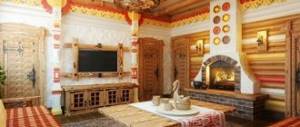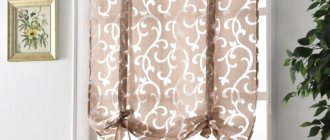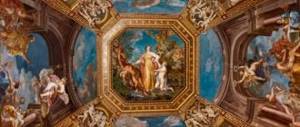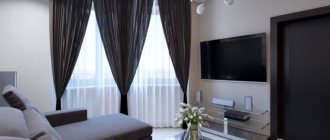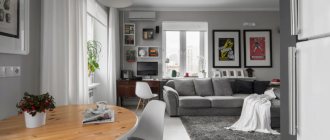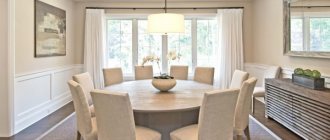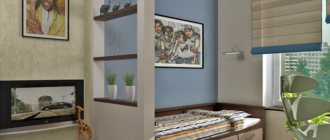Even if there are beds and flower beds on your site, there is an alpine hill and a small pond - this does not mean that there is a correct and harmonious landscape design. It often happens that a lot of time and money are spent, but the desired result is never achieved. Let's try to figure out what landscape design is and what its varieties are.
In a suburban area there is a special freedom of creativity.
What is landscape design
The concept of landscape design appeared at the turn of the 19th-20th centuries, although, in fairness, it is worth noting that people involved in the improvement of gardens and parks have existed since ancient times (this, in particular, can be judged by one of the wonders of the world - the Hanging Gardens of Babylon ). Even in Russia in the 18th-19th centuries there were so-called “organizers of parks and gardens” who were engaged in “landscape art”.
The owner can realize any idea and build the space around the house in his own way.
In general, much less attention was previously paid to the design or decoration of the site. The main efforts were directed towards practical benefits - for example, getting a good harvest.
All components of landscape design fit well into the rule “combine top, bottom and shape.”
Currently, no one doubts that landscape design is an art that requires certain knowledge and skills, and is impossible without financial investments.
When developing a landscape project, it is necessary to connect vertical and horizontal planes.
We can safely say that this direction is based on three main components:
- Architecture and design;
- Botany and plant growing;
- Philosophy and culture.
It is important to emphasize the required volume, to create a single space where nothing will be discordant with the overall style decision.
Design
This is truly a key point. To begin with, a detailed site plan is drawn up on paper and all future objects are “placed” on it. It’s only at first glance that everything is extremely simple, but in fact, the components of the future landscape masterpiece should be arranged in exact accordance with the style. The result should be a complete harmonious composition.
Any style of landscape design is a reflection of the corresponding time, colored by national flavor.
In addition, at the design stage, the order of work is determined, for example, when the irrigation system, drainage, lighting, and so on will be installed.
Crop production
At this stage, the main thing is to correctly determine the terrain, climatic features, as well as the characteristics of the soil cover. Based on this, an “assortment” of plants is planned that will fully grow and develop, and, importantly, will harmoniously “fit” into the overall concept.
The use of characteristic types of paving, site planning, trimming hedges, and arrangement of mandatory areas paints an effective style image.
Culture
This aspect is especially important when creating theme gardens. For example, when designing a Japanese garden or a Country garden, it is impossible to avoid the issue of philosophy and cultural origins. In addition to exclusively professional knowledge about plants and style, it is imperative to know what a particular element means and for what purpose it occupies a certain place.
For a modern gardener, it is important to have not only a fertile, but also a stylish, beautiful garden and vegetable garden.
Distinctive features of the German style
German interiors are so practical and comfortable that it is difficult to confuse them with any others. They are gaining more and more popularity in Europe. The most advantageous feature of the interior of this direction is its naturalness, bordering on simplicity; here it is impossible to find even a hint of any originality or sophistication of taste. Designers creating such an interior pursue one goal - achieving maximum practicality, without compromising high quality. Naturally, with this approach only environmentally friendly materials are used.
With all the uniqueness of the austere beauty of the German interior, it is necessary to remember that it is not suitable for everyone.
If you are used to placing and storing a lot of things in your apartment, then it is better to choose some other style when decorating your apartment.
Do you have a healthy pragmatism, love strict order and prefer reliability and functionality to external beauty? Then, even if you have no German ancestry, your ideal design is obvious. In particular, when planning a kitchen renovation, you should opt for the German style, one of the most practical and laconic among its European counterparts.
Such a room accurately conveys the character traits of the indigenous inhabitants of Germany. German style does not accept formality and ostentatious aesthetics. After all, its basis is the convenience of location and functionality of each piece of furniture.
Basic elements of landscape design
Although the style and meaning of design decisions are different, for the most part they have a common basis.
The main condition for the harmonious design of a garden plot is that the style of the house matches the rest of the plot.
The basis for creating landscape design in any style:
- Building. It is usually the center of a design project.
- Lawn covering. The grasses from which it is created can be different, but the presence of a lawn is mandatory in many stylistic decisions.
- Green spaces. Trees, shrubs, flowers and even entire compositions (flower beds, for example).
- Water source. This could be a pond or stream, a fountain or a small waterfall.
- Paths and platforms.
- Small architectural forms: benches, figurines, arches.
- Small decor. Lamps, pendants, animal figurines.
- Maintenance: lighting, watering.
When decorating their plot or garden, each person chooses the type of plants and decorations to their liking.
Advantages and disadvantages of the European style
Like any design decision, decorating a garden in a European style has many advantages and disadvantages.
- If we talk about its positive aspects, it should be noted that such gardens:
- They look quite aesthetically pleasing. They have their own strict style, which allows them to emphasize the status of the owner;
- with daily care they will always effectively decorate the area, regardless of the season;
- create a special atmosphere of comfort;
- do not load, which allows you to enjoy nature for hours on end.
Learn how to use gladioli in your flower bed.
However, this type of landscaping also has some disadvantages. Complex plantings of several groups of plants at once require a lot of time from the gardener for complex, and in some cases, quite specific care . Therefore, beginners are unlikely to be able to cope with such a garden without outside help from a specialist. To create a full-fledged composition, at least 10 acres of free space is required, so in a small area it will not be possible to take advantage of all the advantages of a European garden. That is why a European garden is always associated with considerable costs.
Landscape Design Styles
Main types of landscape design:
- Regular or classic. This design of the site involves an abundance of regular shapes and straight lines. Preference is given to formal flower beds and lawns. Reservoirs also have regular shapes.
- Landscape. This landscape is very reminiscent of natural beauty. The elements are whimsical and repeat the shape and color of natural objects. There are no clear lines or regular shapes.
If you are planning to decorate your garden in an interesting way, one of the best decisions is to stick to a certain style.
Each variety has its own styles. What styles are there in landscape design?
English
As the name suggests, foggy England is considered the birthplace of this style. The style originated at the very beginning of the 18th century, and its main idea was to preserve the pristine natural beauty. English style is balancing on the brink of negligence and well-groomed.
A classic example of a landscape in the English style was observed by the heroine of Jane Austen’s novel “Pride and Prejudice” in the rich estate of Mr. Darcy.
The main criteria for this landscape design:
- Lack of straight lines and clear contours, smooth outlines;
- Abundance of vertical gardening;
- Unity of home and garden plot;
- Paths very similar in shape to natural ones, only paved with stone;
- Well-groomed lawns as an additional place to relax;
- Using plants of different heights to create picturesque corridors and labyrinths;
- A body of water (stream) that closely resembles a natural spring;
- Color contrasts, riot of colors;
- Large "carpet" flower beds.
Cool shades of inflorescences, a combination of pink and blue, and the absence of flashy accents are preferred.
Typically, such a picturesque garden begins immediately outside the door of your home, without preludes or preparatory areas. Mandatory components of the English style are wooden or stone benches, cozy gazebos, small bridges, and massive forged lanterns. To ensure that no one doubts your English garden, be sure to install an ancient (or very similar to an ancient) statue in it.
Particular attention is paid to green spaces and lawns: in addition to careful year-round care, there is a careful screening of species based on the type and color of foliage.
Dutch
An abundance of colors, pastoralism and an extremely well-groomed appearance - all this is the Dutch style. A clear idea of this direction of landscape design can be obtained from the paintings of artists of the Dutch school.
The image of a Dutch garden directly correlates with the character of the inhabitants of this country and its natural conditions.
Main attributes:
- Parterre lawn;
- Hedge;
- Flowers and shrubs are at the forefront; there are very few trees;
- There are mixborders along the garden paths;
- Unusual figurines, decor reminiscent of rustic style;
- Flowerbeds in unusual carts.
A house in a Dutch landscape must be covered with vines. Directly opposite the main entrance is a bright lawn surrounded by shrubs and small flower beds. The accent of the lawn is either a standard tree, a topiary, or a fountain.
Forced to conquer living space from the advancing sea, the Dutch value land very much, and their gardens are quite small.
The main flowers for flower beds in the Dutch landscape are considered to be bulbous: tulips, daffodils, lilies. Delphinium, foxglove, and chinstrap are also actively used.
Another important condition of a Dutch garden is openness. The beauty of the site should definitely be enjoyed by all passersby. So high “blind” fences are inappropriate here. Most often, the boundaries of the garden are marked by a hedge or a wrought-iron fence with sparse twigs.
The area is used to the maximum, ordinary trees are replaced by dwarf forms.
The paths are covered with pebbles or wood chips, and platforms are organized on which gazebos or pavilions are installed. But benches are often “cut” right into the hedge.
It is impossible to imagine such a garden without hand-made items. These include figurines, carts with flower beds, as well as wheels and wooden mills. Wooden buckets, chests of drawers and barrels are used for mini flower beds. And the small sculptures of such a garden will definitely make you smile: often these are frogs or unusual fairy-tale gnomes.
The most spectacular part of the garden is the parterre in front of the house, to arouse the admiration of passers-by.
Country
This style is also called rustic. Naturalness is considered its fundamental principle. This direction does not promote unity with nature; it itself is a natural island. And yet there are some rules in country style:
- Slight randomness;
- The paths are paved with stones (or sprinkled with pebbles) so that gaps remain and grass grows;
- There must be beds and fruit trees and shrubs;
- Flowers in huge quantities, and not only in specially organized flower beds;
- Climbing plants on the fence;
- The presence of elements of village life, for example, a section of wicker fabric, a cart, clay pots and jugs;
- Grouping of garden and wild crops.
The rustic style (country) of landscape design is characterized by some negligence, a touch of antiquity, and the absence of perfectly adjusted proportions.
This semblance of a village landscape is built on the unity of natural “disorder” and attentive management care. By the way, it is better not to place fruit trees crowded in one place. Think over the placement scheme in advance and systematically distribute them throughout the area. And it’s not necessary to create a full-fledged vegetable garden; you can get by with beds with spices.
It seems that the artist sketched a pictorial sketch with light strokes, which suddenly came to life.
Expensive and exclusive plants will be superfluous at this celebration of nature and simplicity. But you can’t do without sunflowers and spectacular pumpkins. Also don't forget about mallow, calendula, cosmos, chamomile and marigold. These elemental plants will create the foundation and add a unique lightness to the rustic style.
In country style, the construction of wooden gazebos and the creation of man-made ponds and streams are encouraged.
In a village garden there is sure to be a place for a spectacular garden scarecrow, rough benches and hedges. Wicker furniture and decorative elements look harmonious in this style.
Chinese
More and more lovers of the East are trying to recreate the Chinese style in their countryside. This desire is understandable, because this style dates back hundreds of years, it is harmonious, but very unusual for a European.
A Chinese-style garden does not tolerate symmetry, straight lines and clear outlines. Its founders are confident that energy can circulate freely only in non-man-made space.
The special features of the Chinese style in landscape design are the elegance of lines, richness of colors, and the desire to transform the simple into something complex without violating the natural harmony.
Main characteristics of the Chinese landscape:
- All items are required to create complete compositions;
- Such a garden becomes an ideal place for meditation;
- A feeling of limitlessness must be created. This is achieved in the following way: a new landscape is visible from every point in the garden;
- Water must be present both at rest and in motion
- The Chinese landscape is impossible without a tea gazebo;
- Amazing variety of plants.
Such a garden is a kind of model of the world, which means it should give the impression that pine trees, boulders, streams and bamboo appeared naturally, and were not planted and placed according to someone else’s scheme. To make the composition complete, a fence is installed that follows all the lines of the relief and is crowned with a wooden gate, complemented by a wise aphorism.
The space is artificially stretched due to the long length of winding walking paths and the inclusion of water compositions in the landscape.
The place for the tea house is allocated at some elevation, so that it is convenient to admire the open spaces.
Chrysanthemums, jasmine, peonies, tea roses, and irises are considered mandatory for a Chinese garden. And from the trees - pine, juniper and peach.
Scandinavian
This trend appeared in the middle of the 20th century and is becoming more and more popular every year. This style finds its application not only in the countryside, but also in the interior of rooms.
Nothing should distract from the contemplation of natural harmony or immersion in one’s own thoughts.
The main features of the Scandinavian garden:
- Restraint, functionality, orderliness;
- Unusual flower beds and shrubs are used as accents;
- The garden is compact, divided into functional zones;
- Restrained color palette, no riot of colors. The combination of green, brown and gray is relevant;
- Figurines of fairy-tale characters are used as decorative elements;
- Natural materials in natural colors are the best option for additional finishing;
- On such a site, an open gazebo with a fireplace looks harmonious;
- An irregularly shaped pond surrounded by plants;
- Coniferous trees, cereals and green hedges are ideal plant options for the Scandinavian landscape;
- Pots with flowers and miniature flower beds will complement the overall design concept.
An important point: the Scandinavian style has no restrictions on the area of the site, climatic conditions and terrain. You can recreate it anywhere.
New directions have individuality, but do not require compliance with strict standards.
Choosing a style for decorating a personal plot is a serious task. In the end, it depends on how comfortable your vacation will be. And if you can’t create the perfect landscape with all the subtleties, don’t despair. Perhaps a few style elements will be enough to make the garden look harmonious and beautiful.
Half-timbered interior
Often German houses have a national flavor not only outside, but also inside. The special character of the room is determined by wooden beams. They remain intact inside too. The Bavarian interior looks very harmonious in country houses and cottages (see photo below).
It is recommended to use a warm palette and natural finishes in German-style homes. This applies not only to walls, but also to furniture and decor. German-style house projects using frame technology are built very quickly, which means that they practically do not shrink. This allows you to begin finishing the Bavarian house immediately after connecting communications.
The walls and ceiling of a half-timbered building do not require elaborate finishing materials. It is best to use restrained, muted colors in the decor of German interiors. Stone combines harmoniously with wood. They are used to decorate niches of fireplaces, walls in the kitchen or living room. A decorative flat stone with an imitation of the texture of cobblestone is optimal for such work. It looks especially colorful in the interior.
If the house is built from concrete or other materials that do not involve the use of wooden beams, imitation wooden structures are attached to the walls.
Advice! Natural wood and its analogues are used to cover the floor in German interiors. A tile with a stone texture would also look appropriate.
Carpets and other textile floor coverings should be consistent with the overall character of the room. It is not recommended to use bright, caustic colors, the same applies to building materials. All shades of beige and milky colors and natural surfaces are optimal.
German architecture is very convenient for glazing. Window openings can be placed in all rooms, including the attic room. The best material for windows is wood, but many companies offer elegant PVC products that imitate the texture of wood.
Note! A common feature in Bavarian houses is the absence of a ceiling. Only wooden rafters, struts and other elements of the roof frame are left, but the ceiling trim is completely absent. German-style houses with such roofs look very spacious (examples of houses are shown in the photo below).
Attic and attic additions give a Bavarian house a special charm. They are decorated with windows with shutters and flower boxes. In general, special attention is paid to plant decor at home. Plants planted around the perimeter of the building will help complete the image of a German house from a fairy tale. Coniferous trees and bushy grasses, such as heather, are recommended for planting.
Details in the decoration of the Bavarian facade play an important role. Window shutters, metal weather vanes and cozy lanterns - all this will add zest to the image of the building. The material of the parts must be combined with the wooden beams of the house. It could be forging or stone.

